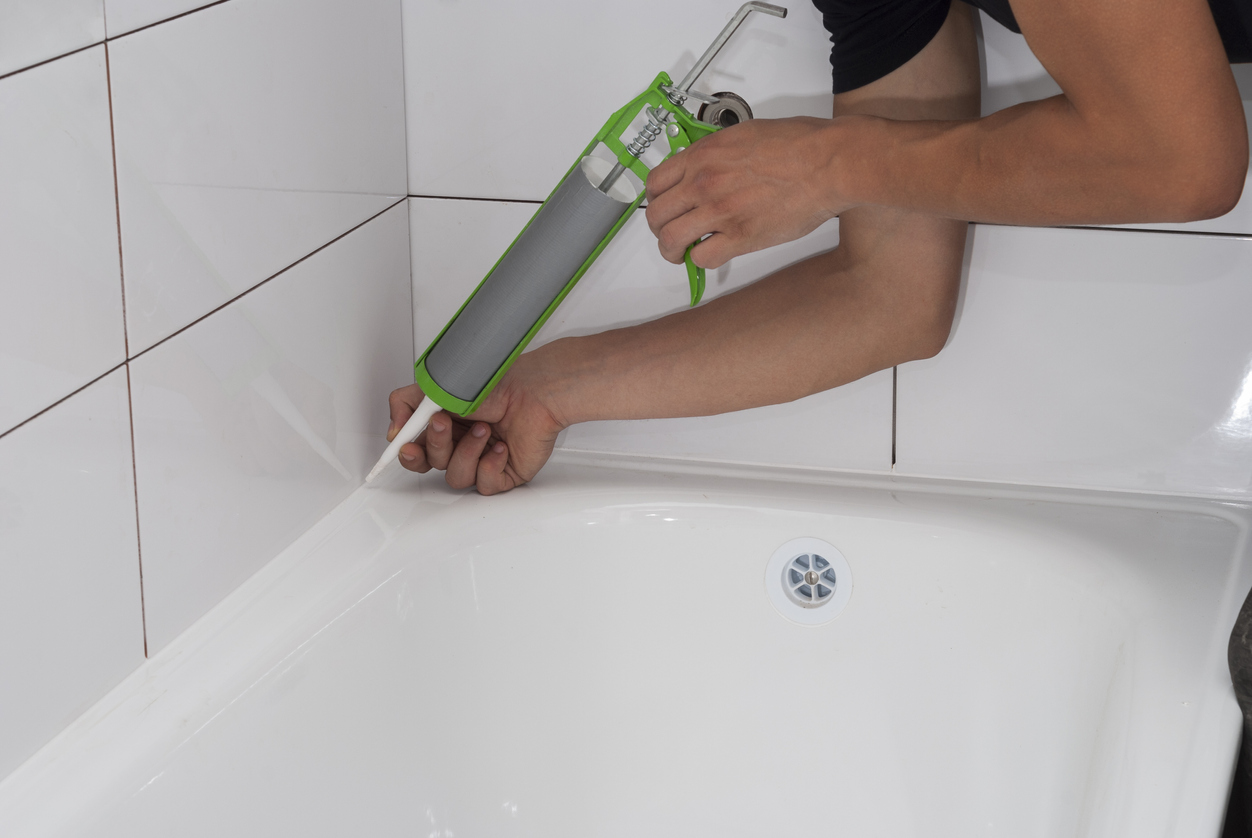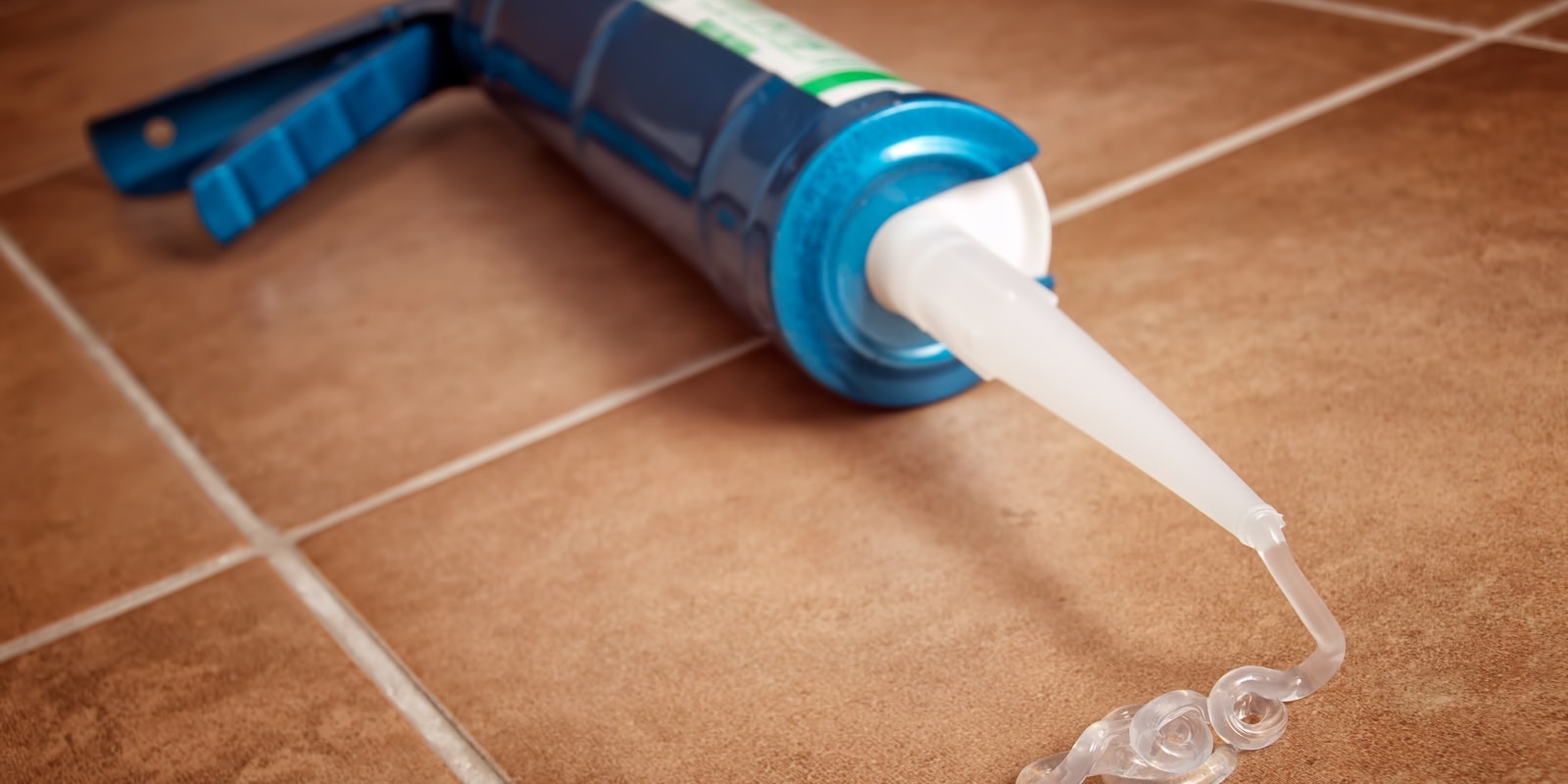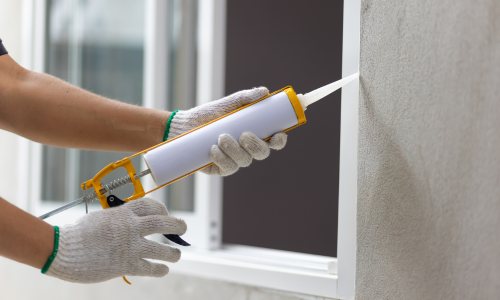Silicone adhesive is a versatile bonding agent, while silicone caulk is primarily used for sealing gaps and joints. Both have different applications and properties, so it’s important to understand their distinctions before use.
Silicone adhesive provides strong adhesion for various materials, making it ideal for repairs and crafts. On the other hand, silicone caulk is designed for sealing purposes, offering waterproof and weather-resistant properties. By knowing the unique characteristics of each product, you can select the right one for your specific project needs.
In this blog post, we will delve deeper into the differences between silicone adhesive and silicone caulk, helping you make an informed decision for your DIY or professional endeavors.
Introduction To Silicone Adhesive And Caulk
Silicone adhesive and caulk are both commonly used in various applications due to their excellent adhesive properties and versatility. Here’s a brief overview of the key properties and common uses of each:
Key Properties:
| Silicone Adhesive | Silicone Caulk |
|---|---|
| High bonding strength | Waterproof sealant |
| Flexible and durable | Flexible and weather-resistant |
| Heat and chemical resistant | Excellent adhesion to various surfaces |
| Transparent or colored options available | Provides insulation and soundproofing |
Common Uses:
Silicone adhesive is commonly used in industries such as automotive, electronics, and construction for bonding components, sealing joints, and securing materials. It is ideal for applications that require high strength and flexibility.
Silicone caulk, on the other hand, is primarily used for sealing gaps and joints in bathrooms, kitchens, and other areas where waterproofing is essential. It provides an effective barrier against moisture, preventing water damage and mold growth.
Both silicone adhesive and caulk offer reliable performance and have their own unique applications. Understanding their key properties and common uses can help you determine the best option for your specific needs.

Chemical Composition And Material Differences
Silicone adhesive and silicone caulk have distinct differences in their chemical composition and material properties. Silicone adhesive is primarily composed of silicone polymer, which allows it to form strong bonds on various surfaces. On the other hand, silicone caulk consists of silicone polymer, fillers, and curing agents, making it suitable for filling gaps and providing a waterproof seal. The breakdown of silicone adhesive reveals its high bond strength and flexibility, while silicone caulk’s components contribute to its adhesive and sealing properties. Understanding these differences can help in selecting the most suitable product for specific applications.
Application Techniques For Diy Projects
When using silicone adhesive for DIY projects, it’s crucial to prepare surfaces properly. Clean the area thoroughly to remove any dirt or debris. Ensure the surface is dry before applying the adhesive. For silicone caulk, the surface should also be clean and dry. Use a caulk gun to apply the caulk in a steady, even bead. When applying adhesive, follow the manufacturer’s instructions for the best results. For caulking, smooth the bead with a caulk finishing tool for a professional finish. Both products offer strong adhesion and sealing properties when applied correctly.

Curing Times And Durability
Silicone adhesive and silicone caulk have different curing times and durability. While silicone adhesive cures faster, silicone caulk offers better durability and flexibility once fully cured. Understanding these differences is crucial for choosing the right product for your specific project.
| Curing Times and Durability |
|---|
| Silicone adhesive and silicone caulk have different curing times and durability. Adhesive settling period is a crucial factor to consider. Silicone adhesive typically requires a longer settling period compared to silicone caulk. It needs time to fully cure and achieve optimal bond strength. On the other hand, silicone caulk undergoes a curing process that allows it to form a flexible and durable seal. The curing time for caulk varies depending on factors such as temperature and humidity. It is important to follow the manufacturer’s instructions to ensure proper curing. In terms of durability, silicone adhesive offers excellent resistance to heat, chemicals, and weathering. It is commonly used for bonding applications where strength and longevity are required. Silicone caulk, on the other hand, provides a waterproof seal and is commonly used for sealing joints and gaps in various applications. Both silicone adhesive and caulk have their own advantages and should be chosen based on the specific needs of the project. |
Strength And Flexibility Considerations
When considering strength and flexibility, silicone adhesive offers a stronger bond and better resistance to movement compared to silicone caulk. This makes it ideal for applications requiring durability and long-term performance. Silicone caulk, on the other hand, is better suited for sealing joints and gaps due to its flexibility and ease of application.
| Bonding Power | Movement Accommodation |
| Silicone adhesive offers strong bonding power, creating durable connections between materials. | Silicone caulk provides flexibility to accommodate movement, preventing cracks and leaks. |
Temperature And Weather Resistance
Silicone adhesive offers excellent temperature and weather resistance, making it ideal for outdoor use and high-temperature environments. On the other hand, silicone caulk provides a durable seal against the elements, ensuring long-lasting weather resistance in various applications.
| Silicone adhesive offers excellent temperature and weather resistance for both indoor and outdoor use. It performs exceptionally well in extreme conditions, maintaining its durability and effectiveness. Silicone caulk, on the other hand, may have limitations in extreme heat or cold, affecting its overall performance. When choosing between the two, consider the specific environmental factors and the level of durability required for the project. |
Cost Analysis And Product Accessibility
|
Silicone Adhesive: Suitable for bonding applications, offers strong adhesion and durability. Silicone Caulk: Ideal for sealing joints, provides waterproof and airtight seals. Price Point Comparison: Adhesive generally costs more than caulk, but offers superior bonding capabilities. Finding the Right Product: Consider project requirements and budget to select the most suitable option. |
Case Studies: Diy Success Stories
Discover the DIY success stories of using silicone adhesive versus silicone caulk in various case studies. Explore the benefits and differences between these two popular options for sealing and bonding, and learn from real-life experiences to make an informed decision for your own projects.
Experience the satisfaction of achieving professional results with these inspiring stories.
| Silicone Adhesive | Silicone Caulk |
| Permanent bonding | Waterproof sealing |
| Strong adhesive properties | Flexible and durable |
| Ideal for repairs | Perfect for sealing joints |
Health And Safety Precautions
When it comes to health and safety precautions, it’s important to know the difference between silicone adhesive and silicone caulk. Silicone adhesive is best for bonding surfaces together, while silicone caulk is ideal for filling gaps and sealing joints. Make sure to follow the manufacturer’s instructions for proper use and handling.
| Health and Safety Precautions | |
| Safe Application Methods | Be cautious while handling silicone adhesive and caulk. |
| Long-Term Exposure | Avoid direct skin contact with the products for prolonged periods. |
Final Thoughts On Making The Right Choice
When it comes to choosing between silicone adhesive and silicone caulk, it’s essential to consider the specific requirements of your project. For projects that require a strong bond and adhesion, silicone adhesive is the ideal choice. Its ability to provide a durable and long-lasting bond makes it suitable for various applications, including construction and DIY projects. On the other hand, silicone caulk is best suited for sealing and waterproofing tasks, such as sealing joints and seams in bathrooms, kitchens, and windows. Understanding the distinct properties and applications of each product is crucial in making the right choice for your project. Moreover, seeking expert advice can provide valuable insights tailored to your specific needs, ensuring the success of your project.

Frequently Asked Questions
Q: What Is Silicone Adhesive Used For?
A: Silicone adhesive is primarily used to bond or seal surfaces together, especially those that are exposed to high temperatures, water, or chemicals. It is commonly used in construction, automotive, and industrial applications.
Q: What Is Silicone Caulk Used For?
A: Silicone caulk is a flexible and waterproof sealant used to fill gaps, joints, and cracks in various surfaces such as windows, doors, and plumbing fixtures. It is also used in construction, home improvement, and DIY projects.
Q: What Is The Difference Between Silicone Adhesive And Silicone Caulk?
A: The main difference between silicone adhesive and silicone caulk is their intended use. Adhesive is used to bond surfaces together while caulk is used to fill gaps and create a seal. Adhesive also tends to be stronger and less flexible than caulk.
Q: Can Silicone Adhesive Be Used As Caulk?
A: While silicone adhesive can be used as a sealant, it is not recommended to use it as a caulk replacement. Adhesive is not as flexible as caulk and may crack or break when exposed to movement or vibration.
Conclusion
After weighing the pros and cons of silicone adhesive versus silicone caulk, it’s clear that both have their own unique benefits. Adhesive is great for bonding surfaces together and creating a permanent hold, while caulk is perfect for filling gaps and providing a waterproof seal.
Ultimately, the choice between the two will depend on your specific needs and project requirements. By understanding the differences between silicone adhesive and silicone caulk, you can make an informed decision and ensure a successful outcome for your DIY project.
